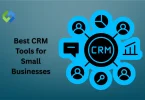In this article, we’ll walk through scalable strategies SaaS startups can adopt post-prototyping to ensure their product doesn’t just work – it grows, performs, and protects user trust.
Table of Contents
1. Architecture: Build for Change, Not Perfection
a. Transition from Monolith to Modular
Early-stage SaaS products often begin as monoliths single-tiered, all-in-one applications. While fast to build, monoliths can become bottlenecks as the codebase grows.
To scale efficiently:
- Modularize the code: Break services into logical domains (user auth, billing, notifications).
- Adopt MVC frameworks: Laravel or Django can help organize code early and make future transitions easier.
b. Consider Microservices or Hybrid Approaches
While microservices aren’t always necessary early on, having the right architecture pattern helps.
When to consider microservices:
- You experience frequent deployment bottlenecks.
- Teams are working on isolated features simultaneously.
- There’s a need for language or technology diversity.
Instead of a full jump, consider hybrid microservices isolating high-load services (e.g., file processing, payments) while keeping the core monolith intact.
c. Event-Driven Design
Using event queues (e.g., RabbitMQ, Apache Kafka) allows you to decouple workflows:
- User signup → send welcome email
- Subscription upgrade → trigger billing + notification
This not only improves performance but increases fault tolerance.
2. Infrastructure: Optimize for Growth and Reliability
a. Use Containerization Early
Docker is a must-have for scalable deployment. Benefits include:
- Consistent environments from dev to production
- Easier integration with CI/CD pipelines
- Simplified scaling on platforms like Kubernetes or ECS
b. Automate with CI/CD Pipelines
Integrate tools like GitHub Actions, GitLab CI, or CircleCI to:
- Run tests before merges
- Deploy to staging/production with rollback safety
- Enforce code quality and security checks
This promotes developer velocity and lowers the risk of breaking changes.
c. Choose the Right Cloud Stack
Avoid vendor lock-in by using cloud-agnostic tooling:
- Use Terraform or Pulumi for infrastructure as code.
- Consider multi-cloud support if your users span regions.
Leverage managed services for faster scaling:
- Databases: Amazon RDS, MongoDB Atlas
- File Storage: AWS S3
- Search: Algolia, Elastic Cloud
3. Security: Harden Before Scaling
a. Implement Role-Based Access Control (RBAC)
Don’t treat user permissions as an afterthought. Use RBAC or Attribute-Based Access Control (ABAC) from day one to:
- Protect sensitive admin areas
- Restrict API access based on roles or metadata
In Laravel, packages like spatie/laravel-permission simplify role management.
b. Secure APIs and Authentication
Use proven standards:
- OAuth 2.0 for third-party integrations
- JWT or session-based tokens for user sessions
- Rate limiting and API throttling to prevent abuse
Encrypt sensitive data at rest and in transit using HTTPS and secure database encryption.
c. Prepare for Compliance
If your SaaS handles user data, especially in regulated markets:
- Be GDPR and CCPA aware
- Implement data retention policies
- Offer user data export and deletion capabilities
Startups engaged in qualifying technical development may also benefit from understanding available tax incentives, such as this detailed R&D credit guide, which can help free up capital for security and infrastructure investments.
4. Bonus: Observability and Cost Monitoring
As your infrastructure scales, so do the costs and complexity. Don’t wait until it’s too late:
- Monitoring: Use Prometheus, Grafana, CubeAPM, Datadog or Middleware to monitor app and infra health.
- Logging: Centralize logs using ELK stack or third-party tools like Loggly.
- Cost tracking: Tools like AWS Budgets or CloudZero help avoid surprise bills.
Knowing what’s happening across your system is critical for uptime and incident response.
Conclusion
Scaling a SaaS startup is less about flashy features and more about sound architecture, resilient infrastructure, and airtight security. By preparing these pillars early, you set your startup up for sustainable growth – one that can serve users reliably, scale gracefully, and maintain trust along the way.
If you’re at the cusp of moving beyond a prototype, take a step back and invest in the invisible features. They may not wow users directly but they’re what keep the wow sustainable.














